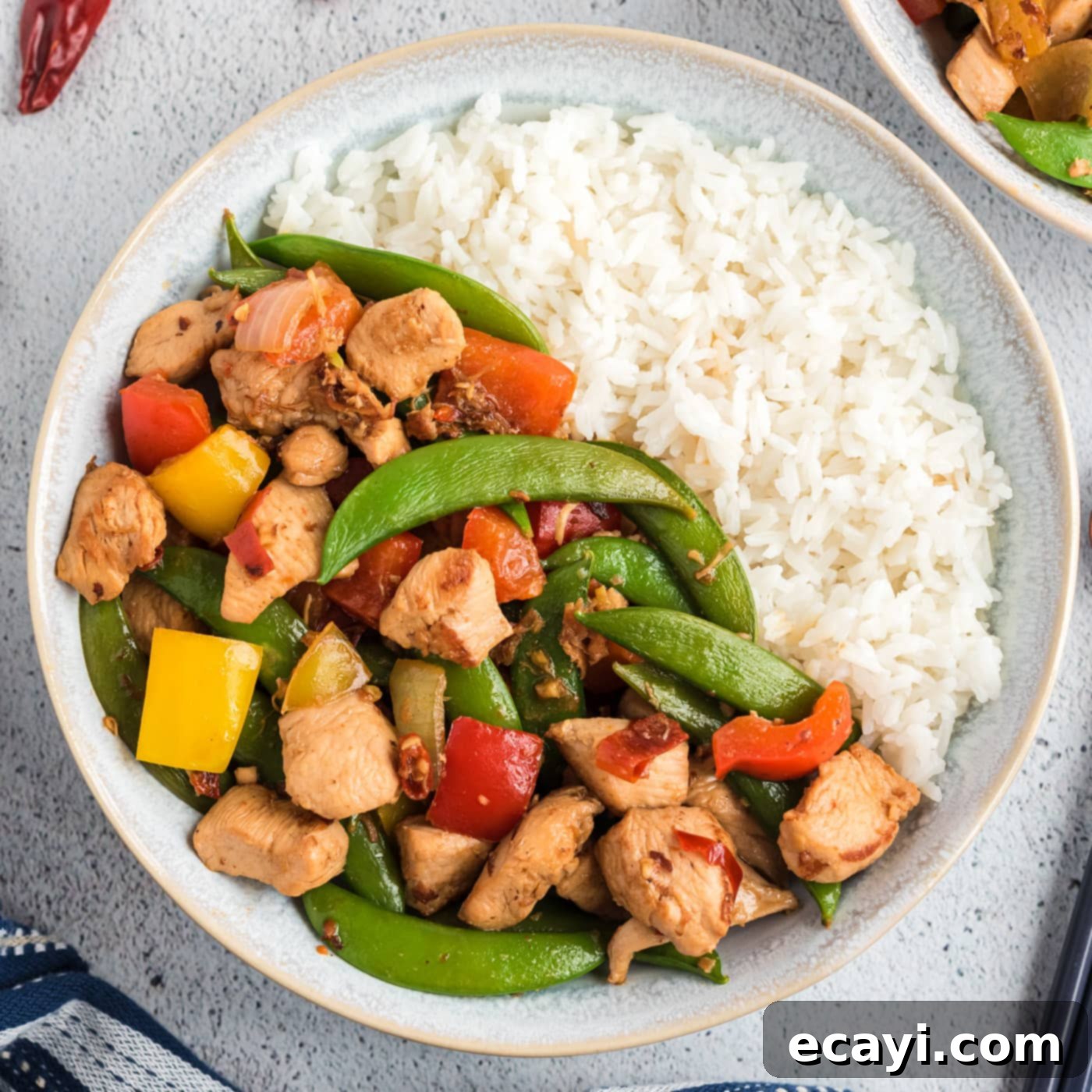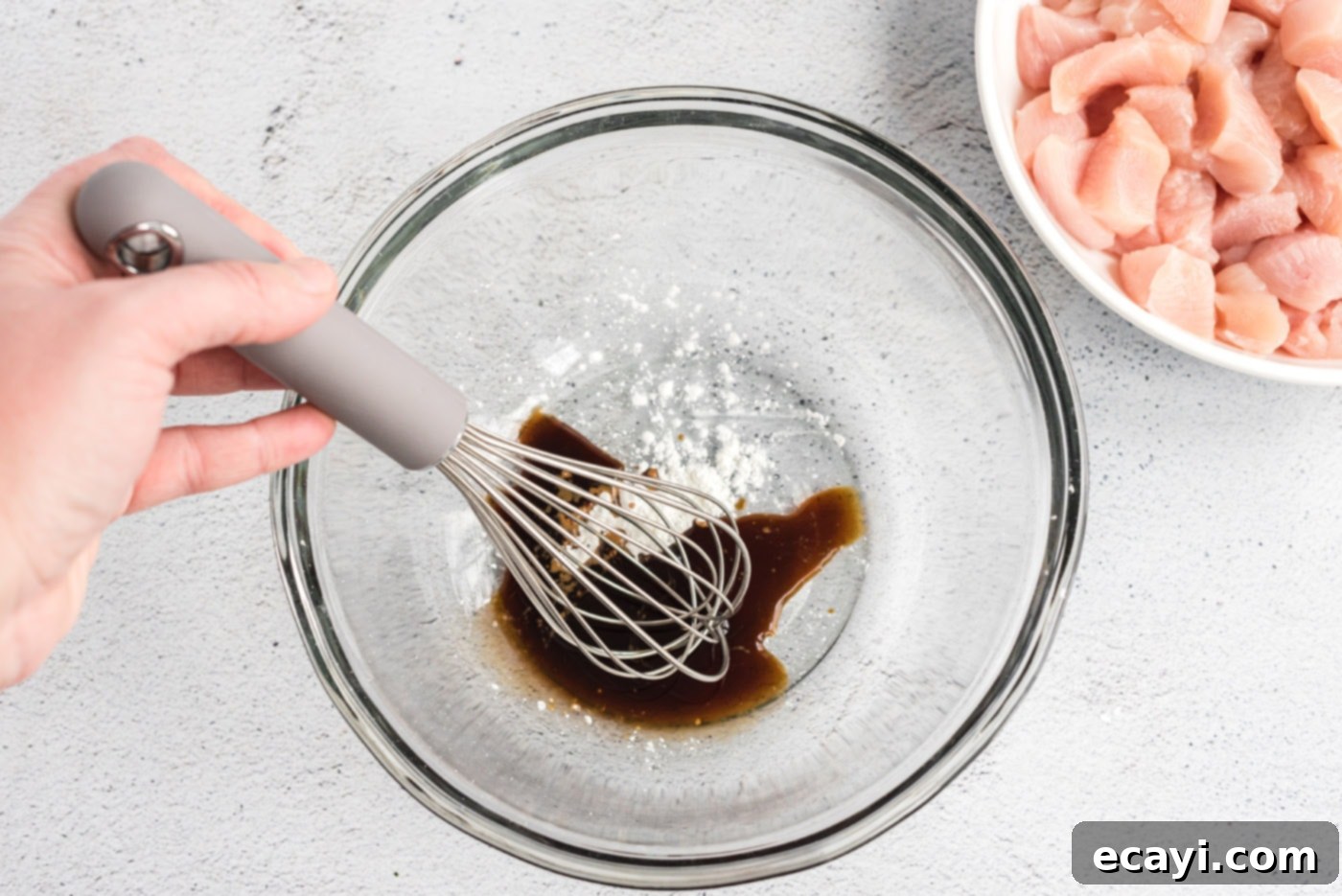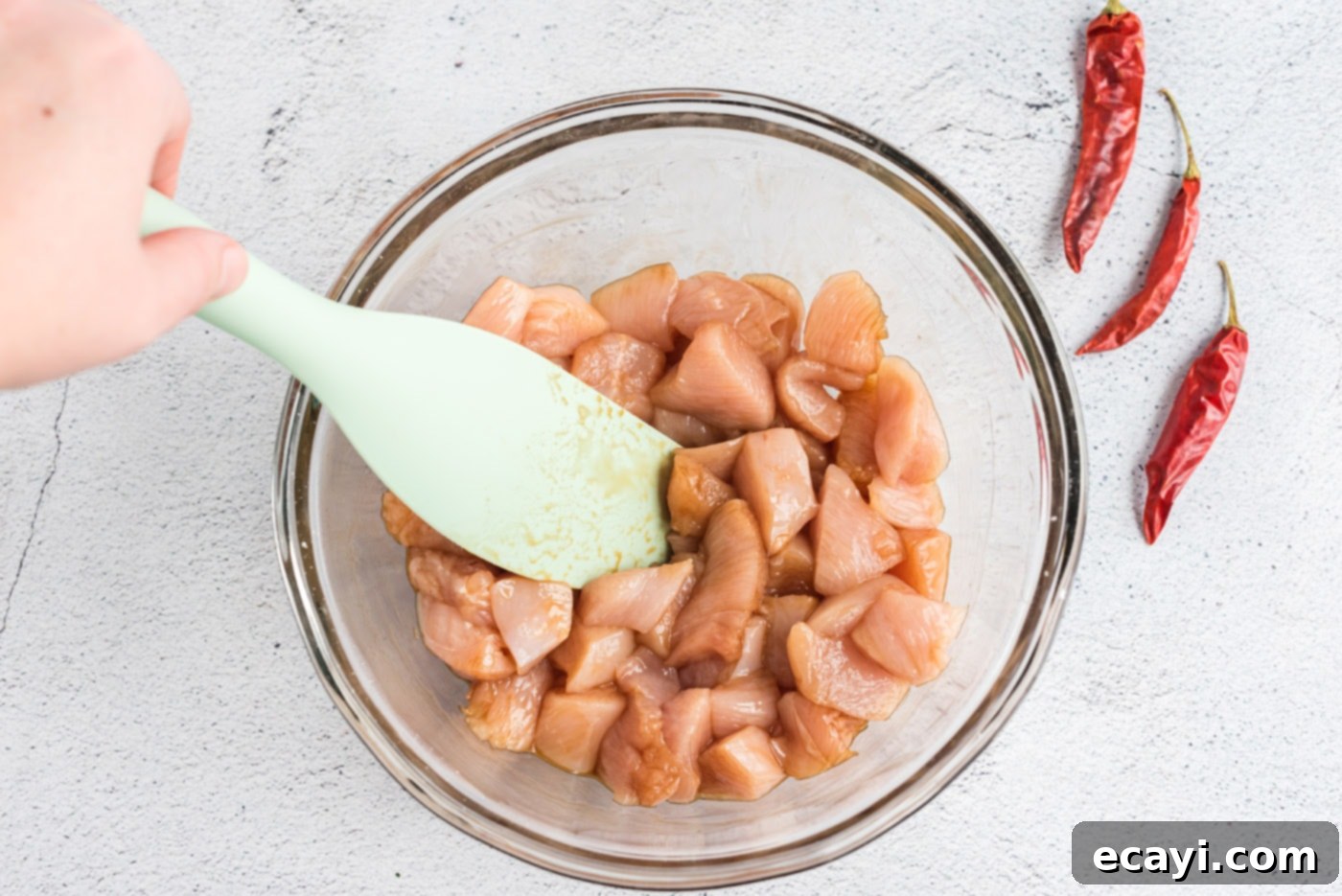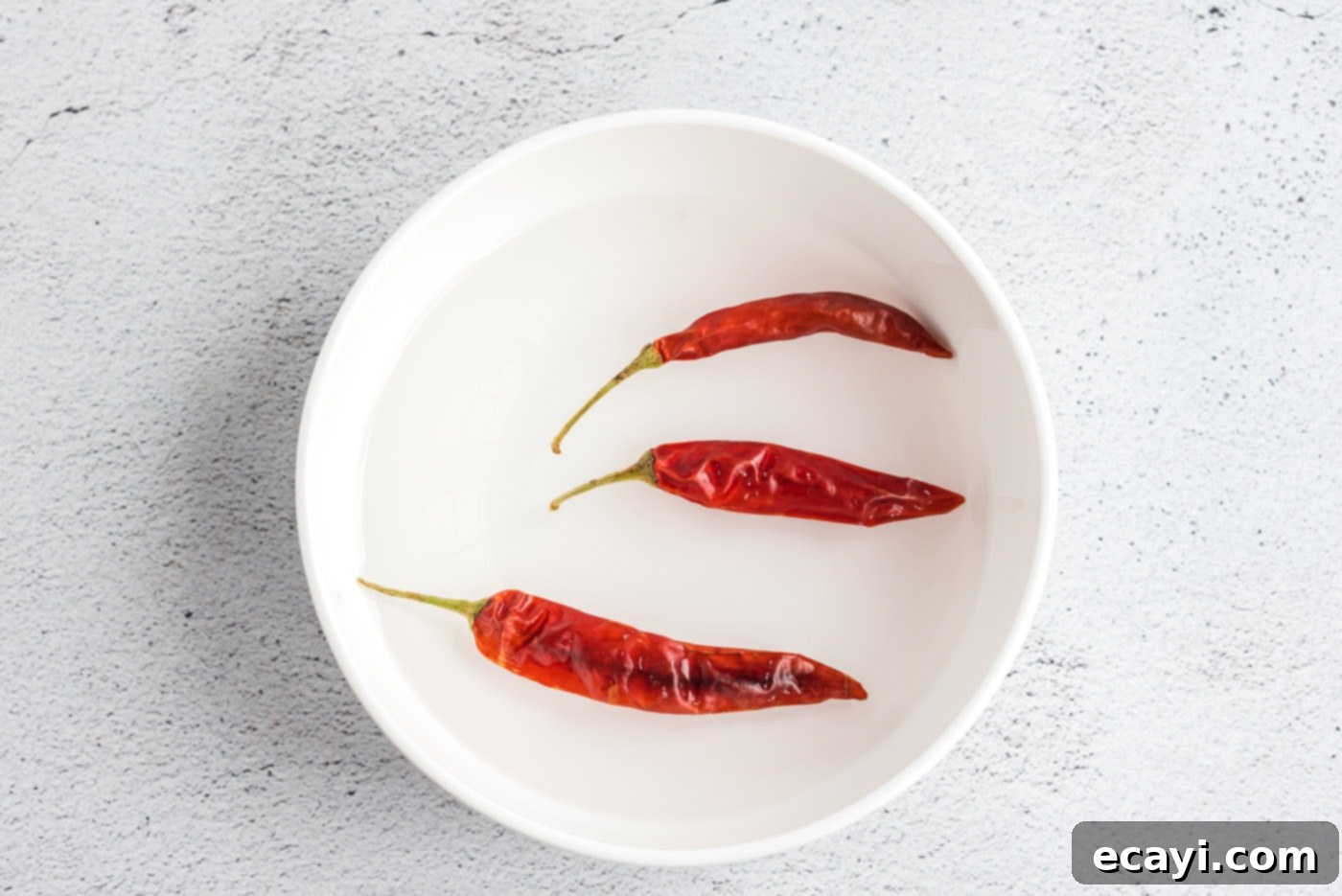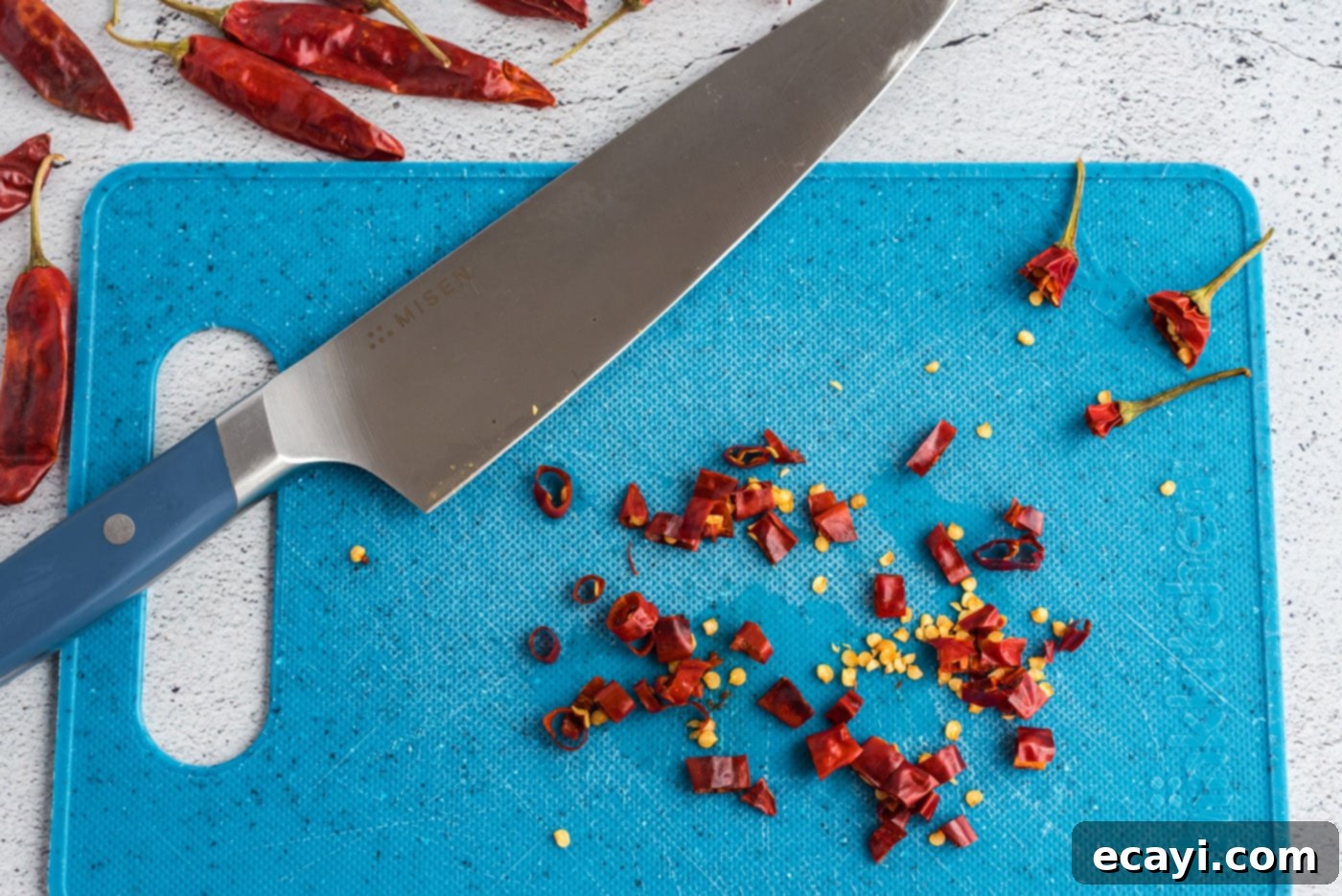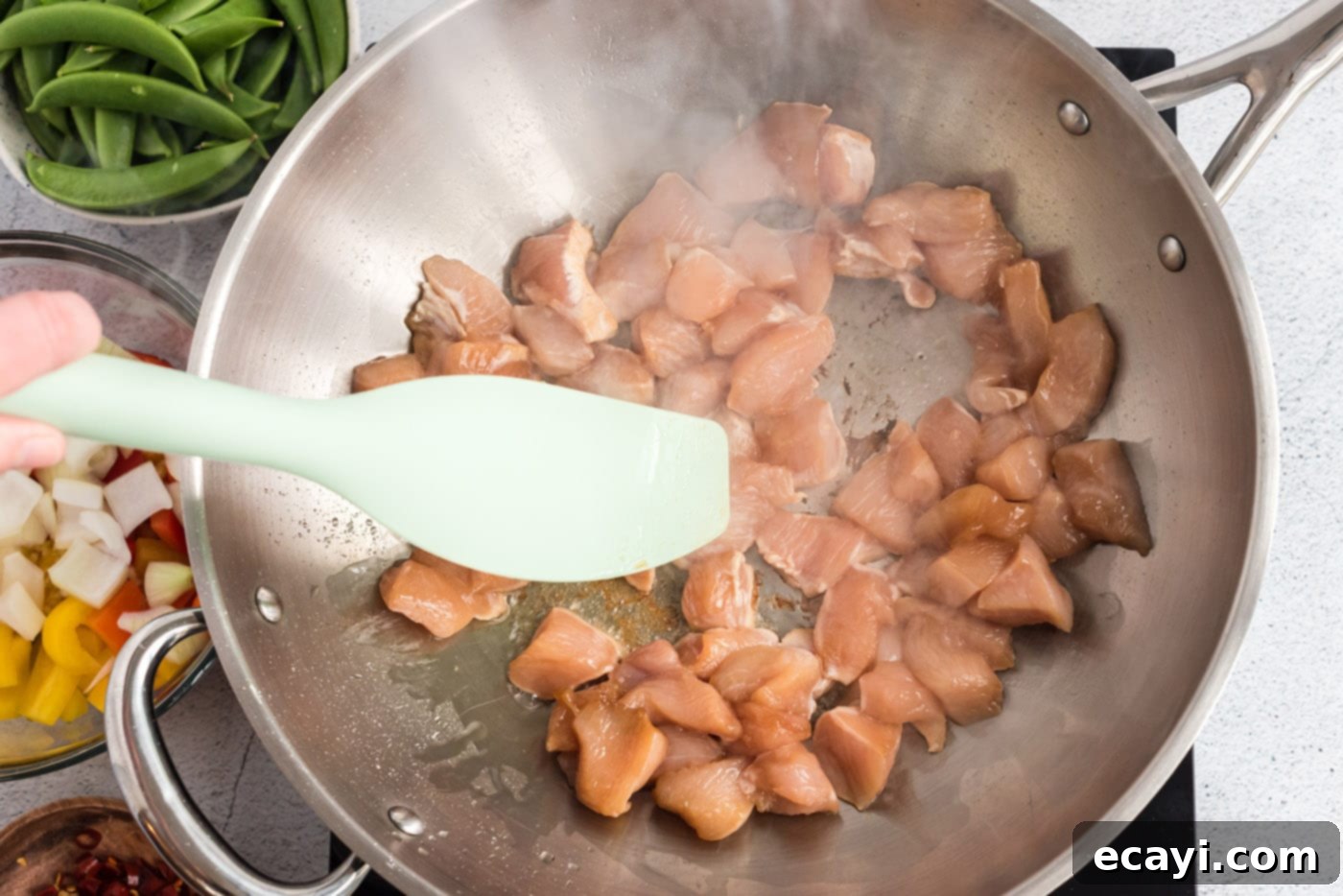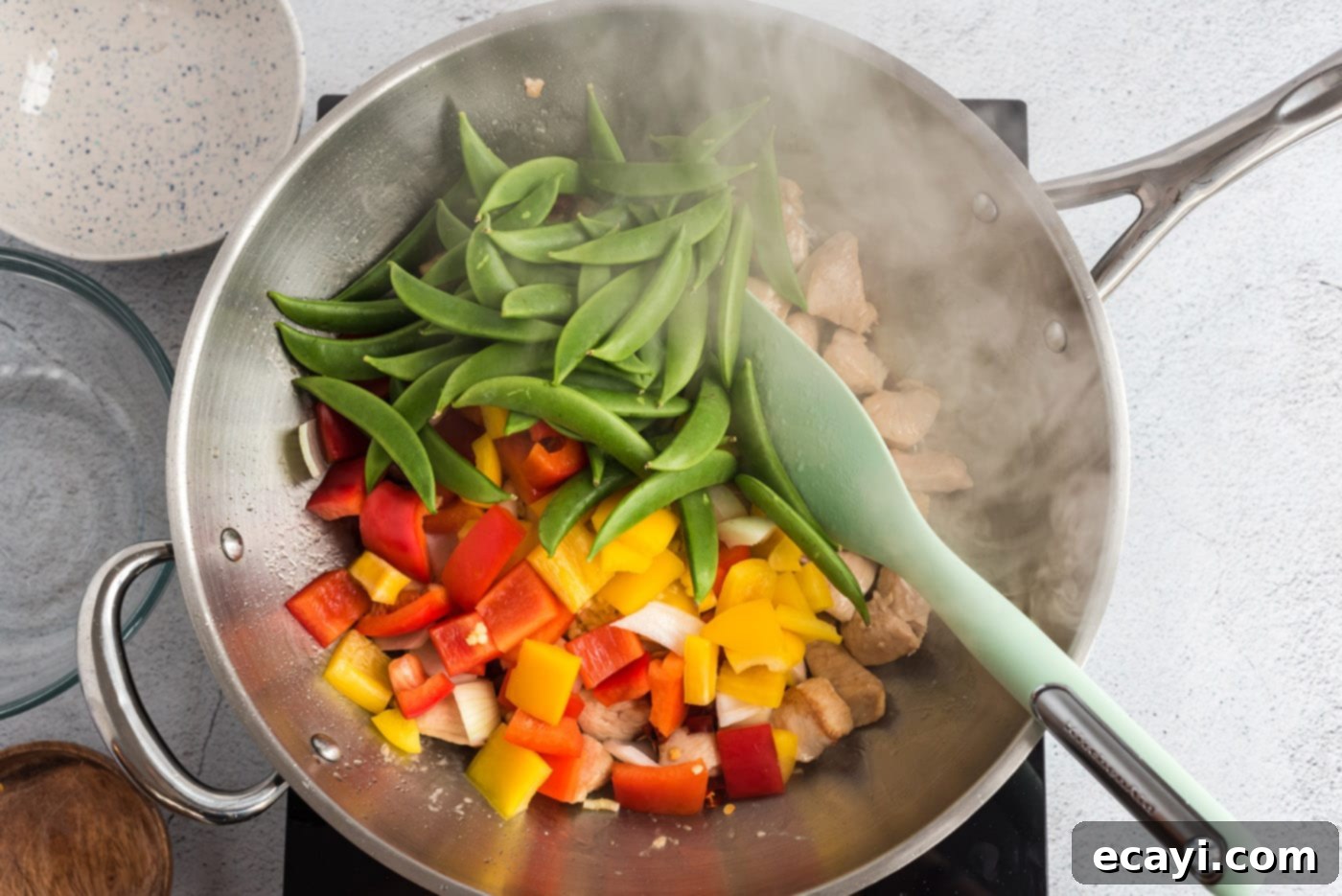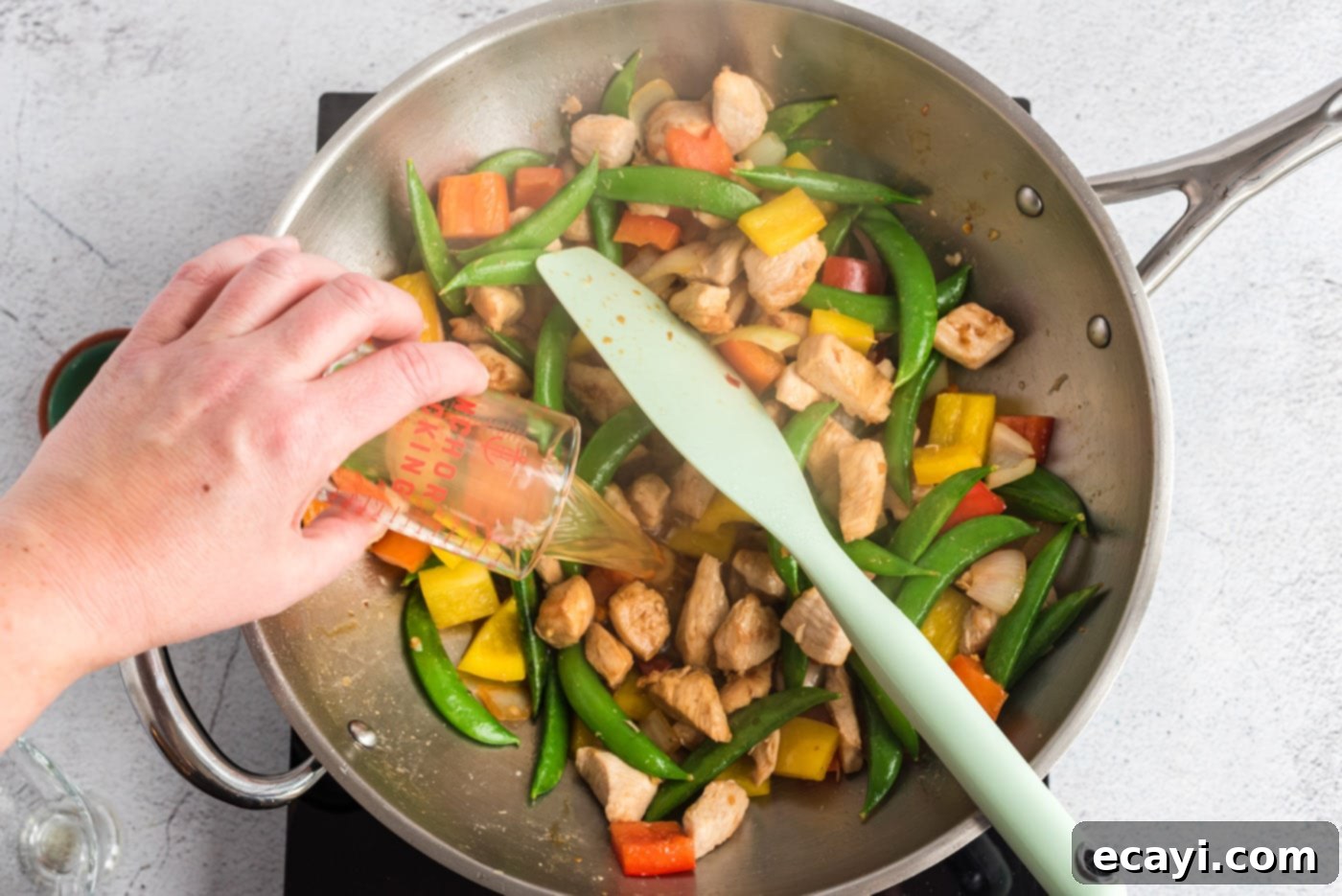Authentic & Healthy Kung Pao Chicken Recipe: Your Favorite Takeout Dish Made Easy at Home
Dive into the vibrant world of Chinese cuisine with this incredible Kung Pao Chicken recipe. A beloved classic, this dish is celebrated for its irresistible balance of savory, sweet, and spicy flavors, complemented by succulent chicken and crisp-tender vegetables. While traditionally a popular takeout choice, our homemade version brings you all the authentic taste you crave with a significant health upgrade. We’ve crafted this recipe to feature tender, perfectly cooked chicken, a medley of brightly colored stir-fried vegetables, and a signature sauce infused with rich low-sodium soy sauce and the exciting kick of dried chiles. Prepare to enjoy a healthier, fresher, and utterly delicious meal that’s far superior to any restaurant equivalent, all made conveniently in your own kitchen.
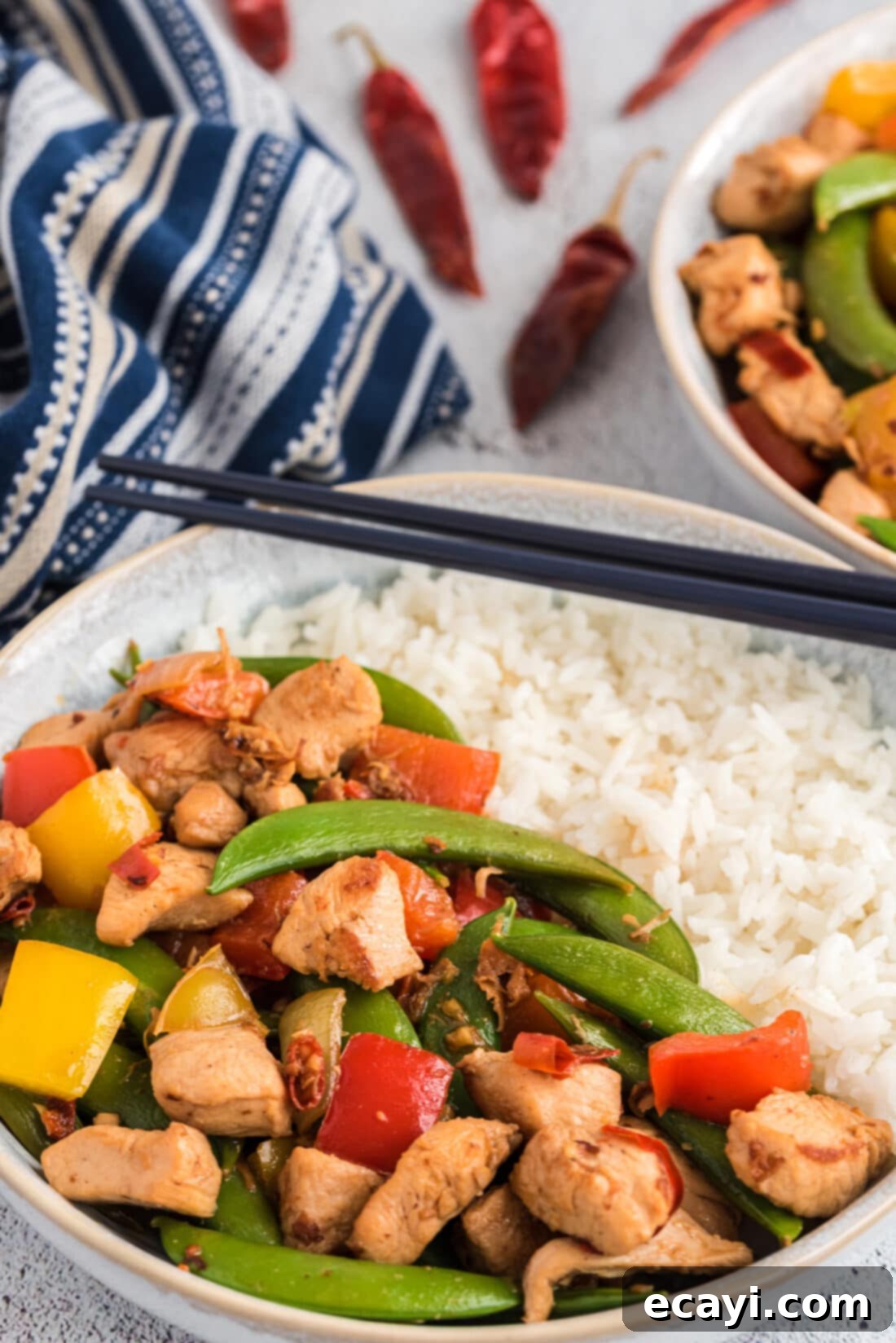
Why This Homemade Kung Pao Chicken Recipe Works
Craving that tantalizing sweet-and-spicy Kung Pao Chicken but looking for a healthier option? This recipe is your answer. It truly stands out for several compelling reasons, making it a staple for anyone who appreciates a good stir-fry. Firstly, we prioritize **fresh, wholesome ingredients**, ensuring every bite is bursting with natural flavors and nutrients. Unlike many takeout dishes or recipes relying on pre-bottled sauces laden with sugar and preservatives, our homemade version completely sidesteps artificial additives and excessive sodium. By using **low-sodium soy sauce** and **fat-free broth**, we significantly reduce the fat and salt content without compromising on that authentic, delicious taste. This thoughtful approach yields a lighter, cleaner dish that you can feel good about enjoying frequently as part of a balanced diet.
The chicken in this recipe is marinated to perfection, guaranteeing tender, flavorful pieces that are never dry. Paired with a vibrant array of crisp-tender vegetables like bell peppers, onions, and sugar snap peas, each component contributes to a balanced, visually appealing, and ultimately satisfying meal. The beauty of this homemade Kung Pao Chicken also lies in its **simplicity and speed**. In less time than it takes to order and pick up takeout, you can have a gourmet-quality, healthier meal on your table. It’s a delightful fusion of incredible taste, health-conscious preparation, and effortless convenience that will quickly become a cherished family favorite for weeknight dinners or special occasions.
RELATED: You might also enjoy these other Asian-inspired chicken recipes: Hearty Chicken Chow Mein Casserole or Sweet & Savory Bourbon Chicken
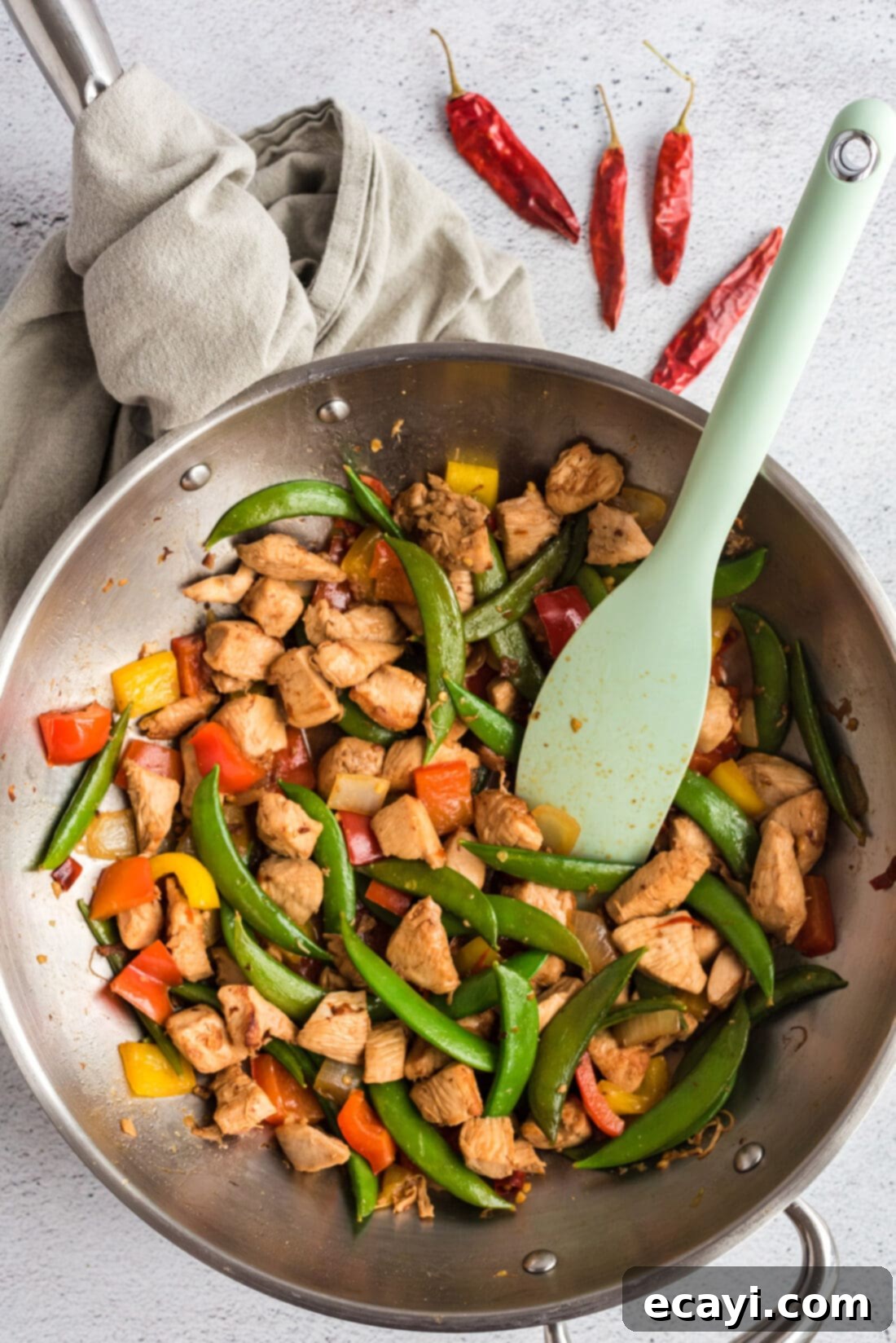
Essential Ingredients for Your Kung Pao Chicken
To prepare this delightful Kung Pao Chicken, you’ll need a selection of fresh and flavorful ingredients. You can find all precise measurements, a complete list of ingredients, and step-by-step instructions in the printable recipe card located at the very end of this blog post. Gather your components to ensure a smooth cooking process!
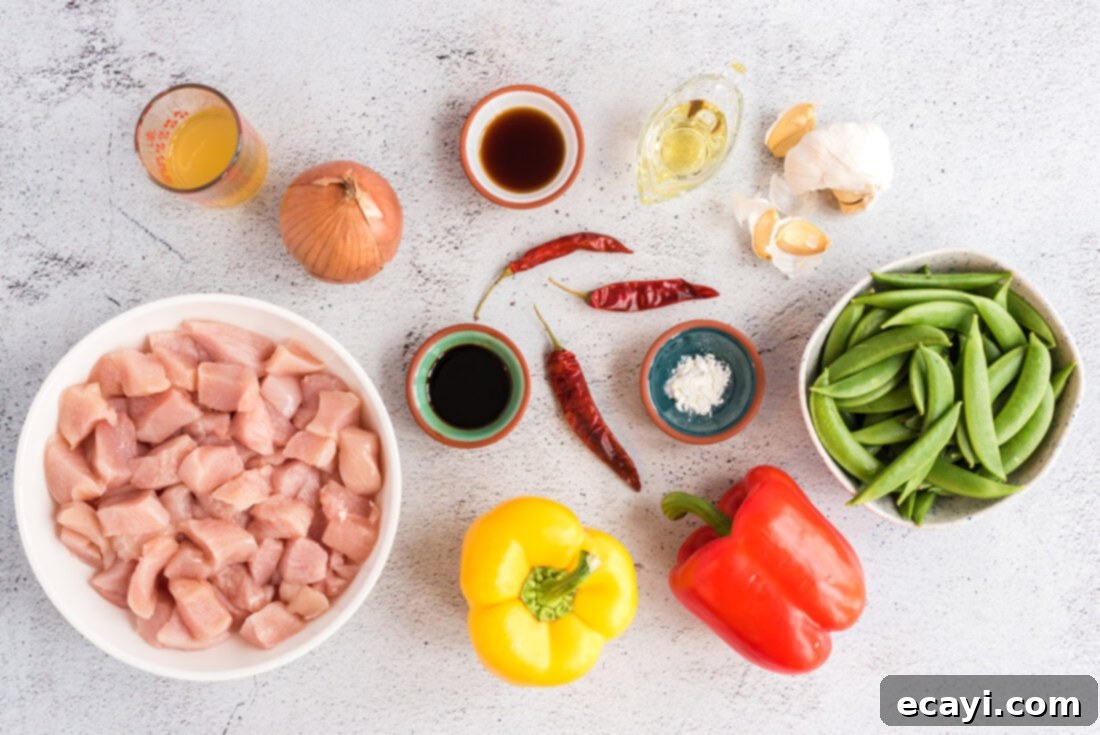
Ingredient Spotlight: Info and Substitution Suggestions
Chicken Cuts and Marinade
The star of our Kung Pao Chicken is, of course, the chicken. We recommend using **boneless, skinless chicken breasts** cut into 1-inch chunks for quick cooking and even searing. If you prefer a richer flavor and slightly juicier texture, **boneless, skinless chicken thighs** are an excellent alternative. The brief marination in cornstarch and a portion of the soy sauce is crucial – it not only infuses the chicken with initial flavor but also tenderizes it, giving it that signature silky texture often found in authentic Chinese stir-fries. This simple step creates a protective coating that locks in moisture during the high-heat cooking process, preventing the chicken from drying out.
Chiles & Heat Control
The signature kick in Kung Pao Chicken comes from **dried red chiles**. These chiles provide a distinct smoky heat that is central to the dish’s character. For this recipe, you have complete control over the spice level. If you enjoy a fiery dish, keep all the seeds intact when chopping the chiles. For a milder experience, simply remove and discard some or all of the seeds. Experiment to find your perfect balance! Dried chiles are preferred for their smoky, robust flavor, which differs from fresh chiles. For an even more authentic flavor, particularly if you enjoy Sichuan cuisine, consider adding **Sichuan peppercorns**. These unique peppercorns don’t just add heat; they impart a fascinating “mala” sensation – a tingling, numbing spice that is characteristic of many classic Sichuan dishes. A small amount, about 1 to 1½ teaspoons, can elevate the complexity of your homemade Kung Pao Chicken to new heights, adding a delightful layer of flavor and sensation.
Vibrant Vegetables
Our recipe calls for a colorful and nutritious mix of **red and yellow bell peppers, onion, and sugar snap peas**. These vegetables not only add beautiful color and a satisfying crunch but also a wealth of essential vitamins and fiber. The beauty of a stir-fry lies in its versatility; feel free to customize your vegetable selection based on what’s in season or what you have on hand. Other great additions that complement the flavors of Kung Pao Chicken include sliced carrots, tender celery, earthy mushrooms, crunchy water chestnuts, or delicate bamboo shoots. Ensure all vegetables are cut into similar, bite-sized pieces for even cooking and a consistent texture in your stir-fry.
Essential Sauce Ingredients
The foundation of our flavorful sauce relies on several key components. We use **low-sodium soy sauce** for its indispensable umami depth and savory profile, making the dish flavorful without excess salt. **Fat-free chicken or vegetable broth** creates a light yet rich base for the sauce, contributing to the overall healthier nature of this recipe. Finally, **black vinegar** (also known as Chinkiang vinegar) is added for a tangy, complex note. This traditional Chinese vinegar offers a unique dark, rich, and slightly malty flavor that is distinct from common white or apple cider vinegars. If black vinegar is difficult to find, don’t worry – you can refer to our substitution suggestions below in the Frequently Asked Questions section to ensure your dish still hits all the right notes.
Optional Add-ins: Peanuts or Cashews
Many traditional Kung Pao Chicken recipes feature **unsalted roasted peanuts** or cashews. These nuts contribute a delightful crunch and nutty flavor that perfectly complements the tender chicken and crisp vegetables, adding another layer of texture and taste. If you choose to include them, we recommend adding about ¼ to ½ cup during the final stages of stir-frying to warm them through and allow their flavors to meld beautifully with the sauce, creating an even more authentic and satisfying experience.
How to Make Homemade Kung Pao Chicken: Step-by-Step Guide
These step-by-step photos and detailed instructions are provided to help you visualize each stage of making this fantastic recipe. For a convenient printable version of this recipe, complete with precise measurements and full instructions, you can Jump to Recipe at the bottom of this post.
- In a medium bowl, combine the cornstarch with 1 teaspoon of the low-sodium soy sauce. Pour this mixture over the cut chicken chunks and toss gently to ensure each piece is thoroughly coated. Set the chicken aside to marinate for at least ten minutes. This crucial step tenderizes the chicken and helps it achieve that desirable silky texture in the stir-fry.


- Place the dried chiles in a small heatproof bowl and cover them with hot water. Allow them to soak for several minutes until they become slightly softened. Carefully remove the chiles from the water and finely chop them. Remember, to adjust the heat level to your preference, you can discard some or all of the chile seeds before chopping for a milder dish, or keep them all for an extra spicy kick. This flexibility ensures your Kung Pao Chicken is just right for your palate.


- Heat a large skillet or a wok over high heat until it’s very hot. Add the canola oil and swirl it around to evenly coat the surface of the pan. Once the oil is shimmering and hot, add the marinated chicken. Spread the chicken out in a single layer to ensure good contact with the hot pan. Sear the chicken on both sides until it’s lightly browned, but not fully cooked through, which should take approximately 4 minutes in total. This quick sear creates a delicious crust and helps lock in the juices.

- To the seared chicken, add the chopped chiles, minced garlic, diced red bell pepper, diced yellow bell pepper, diced onion, and sugar snap peas. Stir fry vigorously for several minutes, allowing the aromatics to become wonderfully fragrant and the vegetables to become crisp-tender. Pour in the remaining one teaspoon of soy sauce, along with the fat-free chicken broth and black vinegar. Bring the mixture to a gentle simmer, then reduce the heat to medium-low. Continue to cook for 2-3 minutes, stirring occasionally, until the chicken is completely cooked through and the delicious flavors have melded into a cohesive and aromatic sauce.


Frequently Asked Questions & Expert Tips
Store any leftover Kung Pao Chicken in an airtight container, ensuring it is properly sealed, and keep it refrigerated. It will stay fresh and delicious for 3-4 days. When it’s time to reheat, a microwave works perfectly. You might want to add a dash of water or extra chicken broth to loosen the sauce if it has thickened too much during storage, restoring its original consistency.
If authentic black vinegar (also known as Chinkiang vinegar) is difficult to locate in your local grocery store, don’t worry, there are suitable alternatives. **White rice vinegar** or **rice wine vinegar** makes an excellent substitute for its tangy profile, offering a good acidic balance to the dish. You could also experiment with date vinegar or a good quality balsamic vinegar, but please be mindful that these options tend to be sweeter and will alter the flavor profile of your Kung Pao Chicken slightly.
Absolutely! The spice level of this Kung Pao Chicken is entirely in your hands and can be customized to your preference. To significantly increase the heat, simply leave all the seeds in the dried red chiles when you chop them, as the seeds contain most of the capsaicin. For an even more intense kick, you can add a pinch of red pepper flakes during the stir-frying process. Conversely, for a milder dish, remove all the seeds from the dried chiles or reduce the total number of chiles used in the recipe. Additionally, for those seeking an authentic Sichuan experience, adding Sichuan peppercorns will introduce a unique tingling, numbing spice known as “mala,” which is characteristic of genuine Sichuan cuisine, without necessarily adding extreme heat.
For the absolute best stir-fry results, a traditional **wok** is ideal. Its distinctive high, sloping sides and curved bottom allow for extremely even heat distribution and make it incredibly easy to toss ingredients quickly and efficiently, ensuring everything cooks perfectly. However, if you don’t own a wok, a large, heavy-bottomed skillet or a cast-iron pan can also work very effectively. The crucial element is to use a pan that can get exceptionally hot and retain that heat well. This high, consistent heat is essential for quickly searing the ingredients rather than letting them steam, which helps achieve that desirable stir-fry texture and flavor.
Yes, this Kung Pao Chicken recipe is incredibly adaptable and versatile! You can easily substitute the chicken with a variety of other proteins for a delicious variation. Sliced pork, tender beef, or plump shrimp are excellent choices. For those looking for a plant-based option, you can certainly make it vegetarian. Replace the chicken with firm or extra-firm tofu (be sure to press it well and cube it), tempeh, or a hearty mix of mushrooms like shiitake or cremini. When using plant-based proteins, we highly recommend marinating them to infuse them with as much flavor as possible, mirroring the chicken preparation steps.
The secret to achieving consistently tender chicken in this Kung Pao Chicken dish, and in most stir-fries, lies in a few key techniques. First, the initial marination with cornstarch and soy sauce is vital; the cornstarch creates a protective barrier that locks in moisture, while the soy sauce adds flavor and helps tenderize the meat. Second, **overcooking** is a common culprit for tough chicken; stir-fries are meant to be cooked quickly over high heat. Finally, avoid **overcrowding the pan**. If you add too much chicken at once, it will drastically lower the pan’s temperature, causing the chicken to steam instead of sear, resulting in a less desirable texture. Cook in batches if necessary to maintain high heat and achieve that perfect tender, slightly browned chicken.
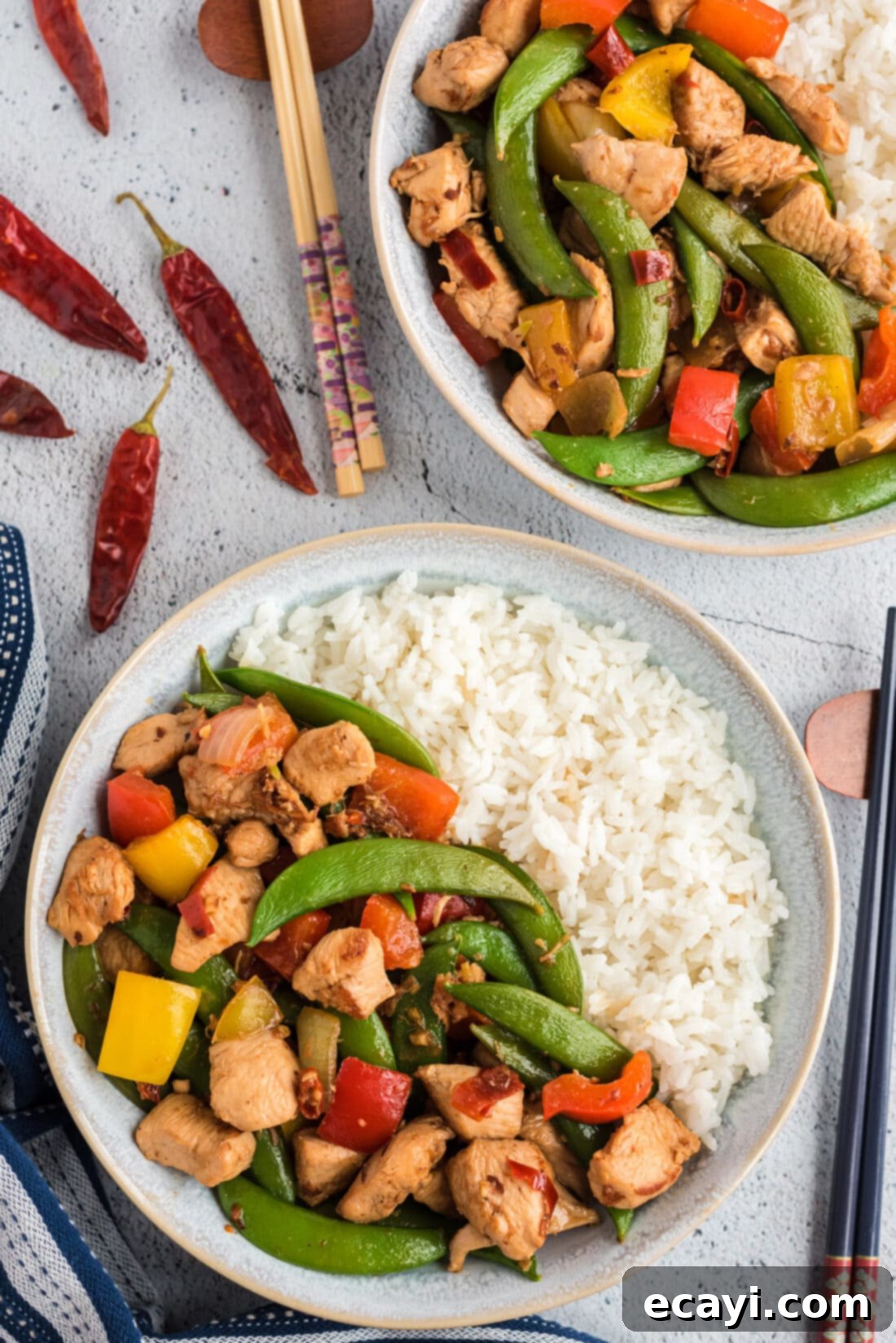
Serving Suggestions for Kung Pao Chicken
Kung Pao Chicken is a complete meal on its own, but its vibrant flavors and rich sauce truly shine when served appropriately. The classic pairing is undoubtedly **steaming white rice**, which perfectly soaks up the savory, spicy, and slightly sweet sauce. You can opt for fragrant jasmine rice, basmati rice, or even brown rice for an added nutty flavor and beneficial fiber. Beyond rice, consider serving it alongside or over a bed of **noodles**, such as lo mein or chow mein, for a heartier and equally delicious meal. Garnish your finished dish with a sprinkle of fresh chopped green onions (scallions) for an extra layer of freshness, a subtle oniony bite, and a pop of bright green color.
As we mentioned in our ingredient spotlight, many traditional Kung Pao recipes incorporate **unsalted roasted peanuts** or cashews for a satisfying crunch and nutty depth. If you enjoy them, feel free to add about ¼ to ½ cup of your preferred nuts during the final stages of cooking to warm them through and allow their flavors to meld beautifully with the sauce and other ingredients. The beauty of stir-fries lies in their incredible versatility, so don’t hesitate to personalize your meal with your favorite combination of grains, garnishes, and optional add-ins to create a truly bespoke culinary experience.
Explore More Delicious Stir Fry Recipes
If you’ve enjoyed the bold flavors and quick preparation of this Kung Pao Chicken, you’re in for a treat! Stir-fries are a fantastic way to create flavorful, healthy meals in a flash. Here are some more of our favorite stir-fry recipes and Asian-inspired dishes that you might love:
- Flavorful Mongolian Beef
- Crispy Sesame Chicken
- Classic Moo Goo Gai Pan
- Savory Chinese Pepper Steak
- Easy Teriyaki Chicken and Rice
- Spicy Szechuan Beef
- Irresistible General Tso Chicken
I love to bake and cook and share my kitchen experience with all of you! Remembering to come back each day can be tough, that’s why I offer a convenient newsletter every time a new recipe posts. Simply subscribe and start receiving your free daily recipes!
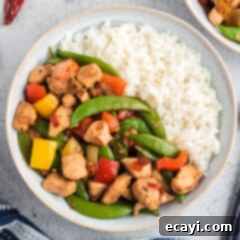
Kung Pao Chicken
IMPORTANT – There are often Frequently Asked Questions within the blog post that you may find helpful. Simply scroll back up to read them!
Print It
Pin It
Rate It
Save ItSaved!
Ingredients
- 10 ounces boneless skinless chicken breasts (about 2 breasts, cut into 1-inch chunks)
- 2 teaspoons low-sodium soy sauce divided
- ½ teaspoon cornstarch
- 2-3 red dried chiles chopped (adjust to desired spice level)
- 2 teaspoons canola oil
- 2 cloves garlic minced
- ½ red bell pepper cut into 1-inch dice
- ½ yellow bell pepper cut into 1-inch dice
- ½ small onion cut into 1-inch dice
- 1 ½ cups sugar snap peas
- 3 tablespoons fat free chicken or vegetable broth
- 1 tablespoon black vinegar
Things You’ll Need
-
Large skillet or wok
-
Chef’s knife
Before You Begin: Important Notes & Tips
- You can enhance your Kung Pao Chicken with a delightful crunch by adding about 1/4 to 1/2 cup of unsalted roasted peanuts or cashews. If you choose to include nuts, toss them into the mixture during step 4, allowing them a few minutes in the hot pan to warm through and meld with the other savory flavors of the dish.
- For an authentic touch and a unique “mala” (numbing and spicy) sensation characteristic of Sichuan cuisine, you may also add in about 1 – 1 1/2 teaspoons of Sichuan peppercorns if desired. Add them along with the dried chiles and garlic for the best flavor infusion.
- The heat level in this dish primarily comes from the dried red chiles. You have complete control over how much spice your Kung Pao Chicken has. For the spiciest possible version, keep all the chile seeds intact. For a milder recipe, simply remove and discard some or all of the seeds. Adjusting the temperature of this dish is entirely dependent on your personal taste preferences!
- If you find it challenging to source black vinegar (Chinkiang vinegar), you can use white rice vinegar or rice wine vinegar as a suitable substitute. Alternatively, you could try date vinegar or balsamic vinegar, but please keep in mind that these two kinds of vinegar are inherently sweeter in taste and will subtly alter the overall flavor profile of the dish.
Instructions for Preparing Kung Pao Chicken
-
In a bowl, combine the cornstarch with 1 teaspoon of the soy sauce. Pour this mixture over the chicken chunks and toss gently to ensure each piece is thoroughly coated. Set the chicken aside to marinate for at least ten minutes. This crucial step tenderizes the chicken and prepares it for a perfect sear.
-
Place the dried chiles in a small bowl and cover them with hot water. Allow them to soak for several minutes until slightly softened. Remove the chiles from the water and finely chop them. Remember, to adjust the heat level, you can discard some or all of the chile seeds before chopping for a milder dish, or keep them all for an extra spicy kick.
-
Heat a large skillet or a wok over high heat. Add the canola oil and swirl to evenly coat the surface of the pan. Once the oil is shimmering and hot, add the marinated chicken. Spread the chicken out in a single layer to ensure good contact with the pan. Sear on both sides until lightly browned, but not fully cooked through, which should take about 4 minutes in total. This quick sear creates a delicious crust and locks in juices.
-
To the seared chicken, add the chopped chiles, minced garlic, diced red bell pepper, yellow bell pepper, onion, and sugar snap peas. Stir fry vigorously for several minutes, allowing the aromatics to become fragrant and the vegetables to become crisp-tender. Pour in the remaining one teaspoon of soy sauce, along with the fat-free chicken broth and black vinegar. Bring the mixture to a gentle simmer, then reduce the heat to medium-low. Continue to cook for 2-3 minutes, stirring occasionally, until the chicken is completely cooked through and the flavors have melded into a cohesive sauce.
Nutrition Information
The recipes on this blog are tested with a conventional gas oven and gas stovetop. It’s important to note that some ovens, especially as they age, can cook and bake inconsistently. Using an inexpensive oven thermometer can assure you that your oven is truly heating to the proper temperature. If you use a toaster oven or countertop oven, please keep in mind that they may not distribute heat the same as a conventional full sized oven and you may need to adjust your cooking/baking times. In the case of recipes made with a pressure cooker, air fryer, slow cooker, or other appliance, a link to the appliances we use is listed within each respective recipe. For baking recipes where measurements are given by weight, please note that results may not be the same if cups are used instead, and we can’t guarantee success with that method.
This post originally appeared here on June 23, 2013 and has since been updated with new photos and expert tips to provide the most current and helpful information.
This recipe was slightly adapted from Jaden Hair’s excellent cookbook Steamy Kitchen’s Healthy Asian Favorites: 100 Recipes That Are Fast, Fresh, and Simple Enough for Tonight’s Supper.
